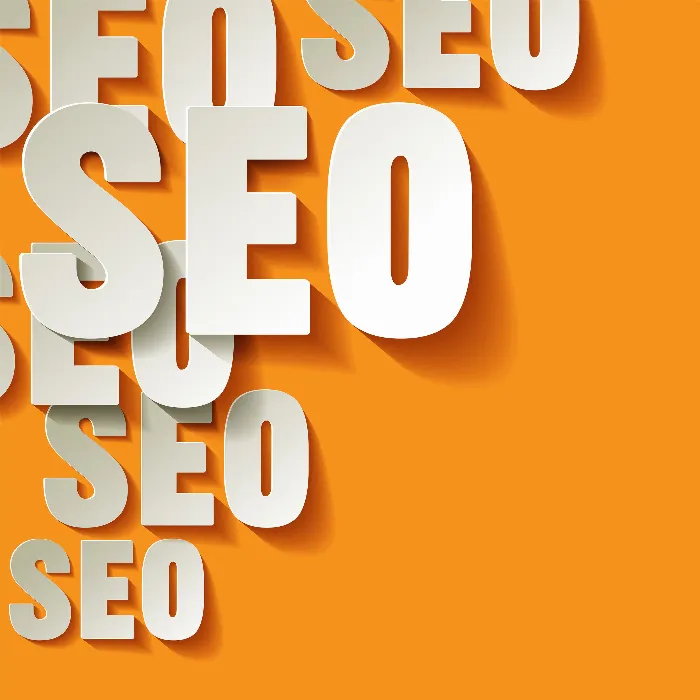Search Engine Optimization (SEO) is a crucial factor for the visibility of your website. Careful OnPage-optimization is essential for this. In this guide, you will learn about the eight essential points to consider in order to make your website attractive for search engines. With a clear focus on structure and content, you take the first step to rise in Google and other search engines. Get inspired by these tips and implement them right away.
Key Insights
- A well-thought-out SEO architecture is the foundation for your success.
- URLs should be concise and rich in keywords.
- The header tags (H1, H2, H3, etc.) must be strategically placed.
- A meaningful meta description can increase your click-through rate.
- High-quality text is crucial for a good ranking.
- Images must be optimized and labeled.
- Internal links strengthen relevant content.
- The overall OnPage optimization should follow a coherent strategy.
Step-by-Step Guide
Understanding SEO Architecture
The first step to OnPage optimization is planning your SEO architecture. Carefully consider which topics you want to address and how they should be structured. A clear hierarchy not only helps users but also search engines to classify and index the content. Remember: The main topics should be easily accessible in your main navigation. This lays the foundation for an effective website.
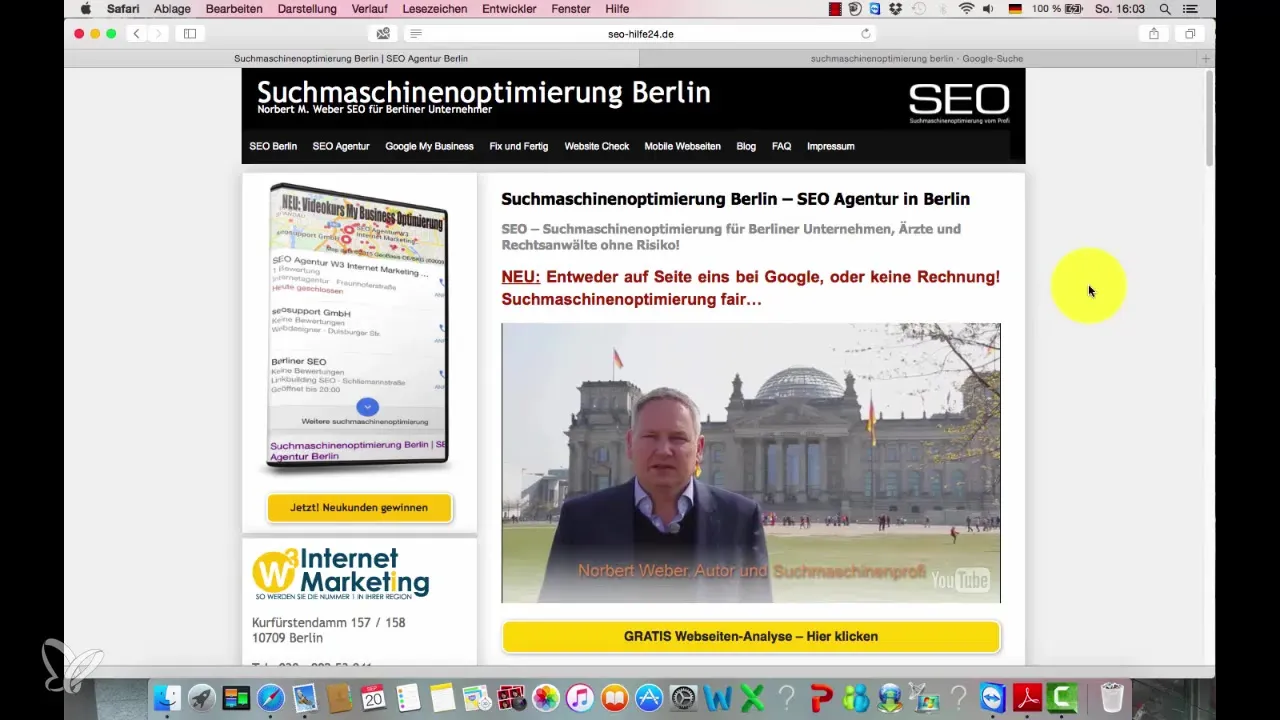
Choose the Right URL
Selecting the right URL is crucial for the discoverability of your website. A concise, keyword-rich domain not only helps with ranking but also makes it easier for users to remember your website. If possible, you should aim to choose a.de or.com domain. Also, avoid egocentric domains, as it is more important for SEO to establish a clear relation to your offering.
Create a Meaningful Meta Description
The meta description is what users see in search results. It should be engaging and include the main keyword. Start with a clear message that describes the topic of your page. Even though the meta description is not as decisive as it used to be, it can still have a significant impact on your click-through rate.
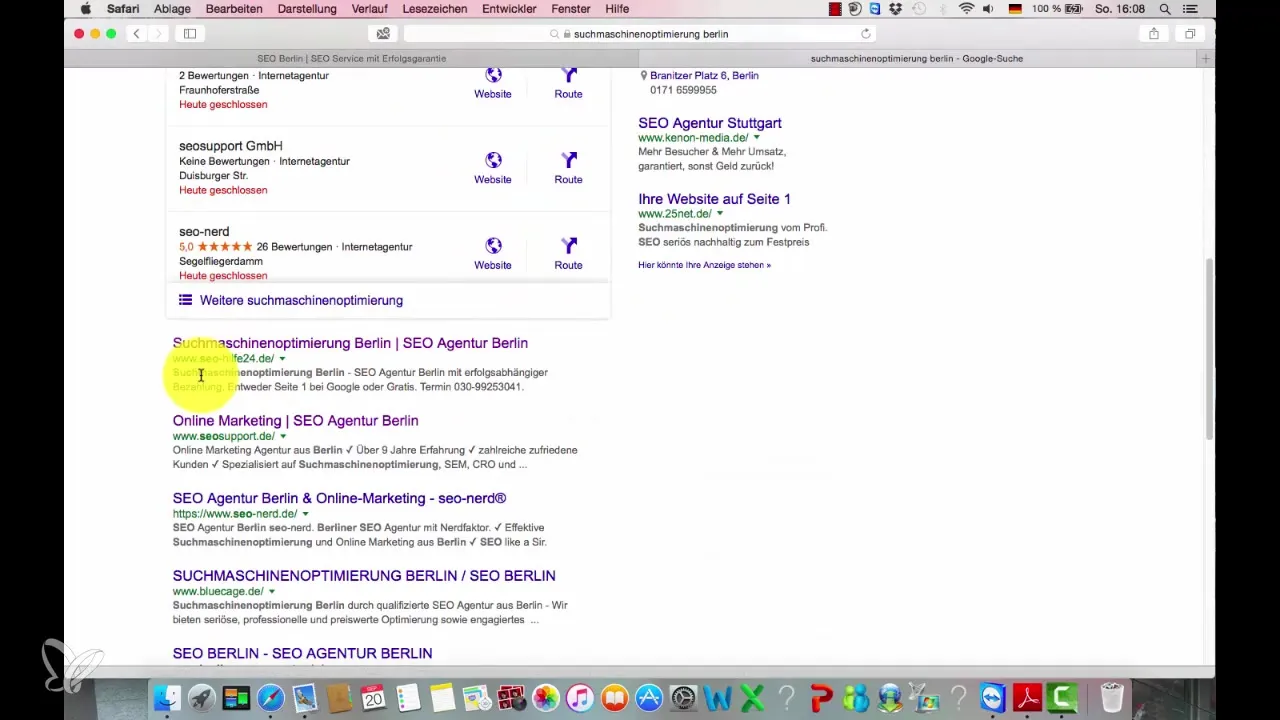
Use Structured Header Tags
The use of header tags (H1, H2, H3, etc.) is essential for the structure of your content. Your H1 heading should contain the main keyword and give a clear overview of the page's content. Based on this, you can use H2 and H3 to divide different topics and strategically position helpful keywords.
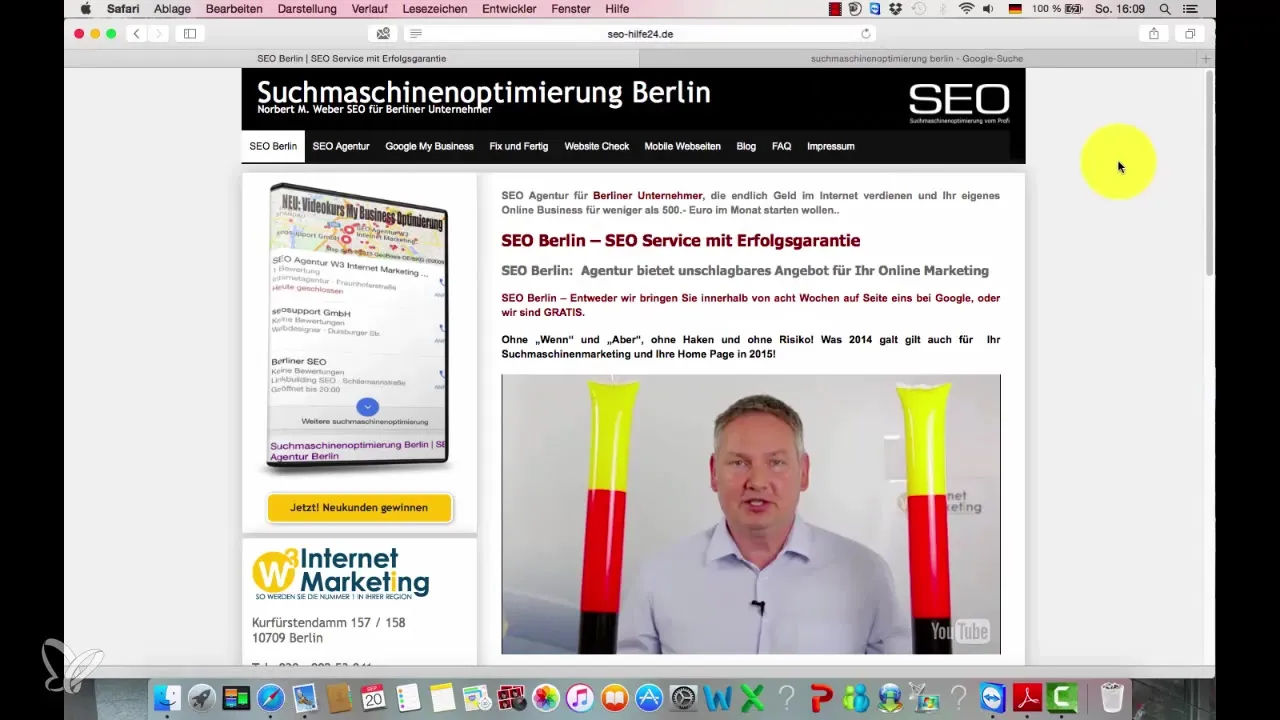
High-Quality Content
The text on your website is the heart of OnPage optimization. Ensure that the content is informative and relevant to the target audience. You should aim for at least 2000 words to give Google the opportunity to classify your page as valuable content. Users are more likely to engage with content that helps them with their concerns—even if it is longer.
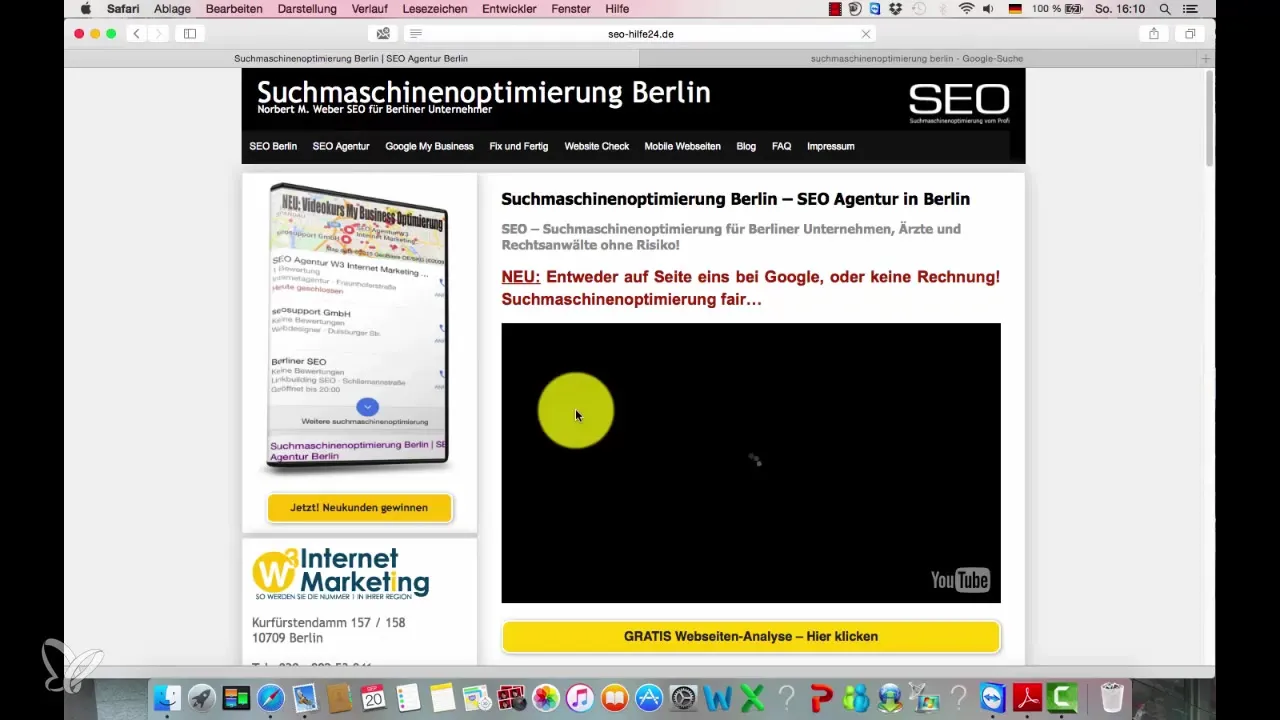
Image Optimization
Images are another important aspect of OnPage optimization. Make sure they are accompanied by a meaningful description that includes the main keyword. This not only improves the visibility of your images in Google Image Search but also helps with the overall assessment of the page by Google. Use two images per 800 words of text to visually support and break up the content.
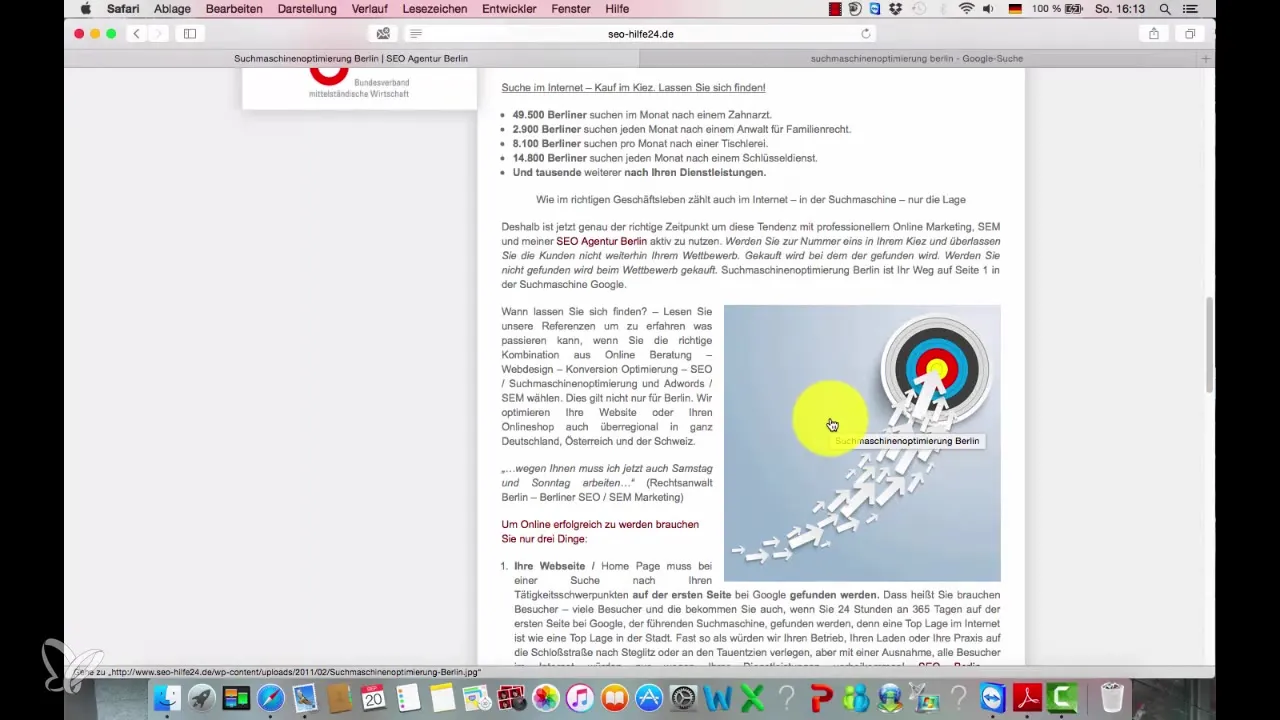
Strategically Use Internal Linking
Internal linking is important for improving the user experience and increasing the relevance of your pages. Every subpage should link back to the main page and vice versa. This makes it easier for both users and search engines to navigate through your content. Strong internal links reinforce the main topic of your website and promote visibility in search engines.
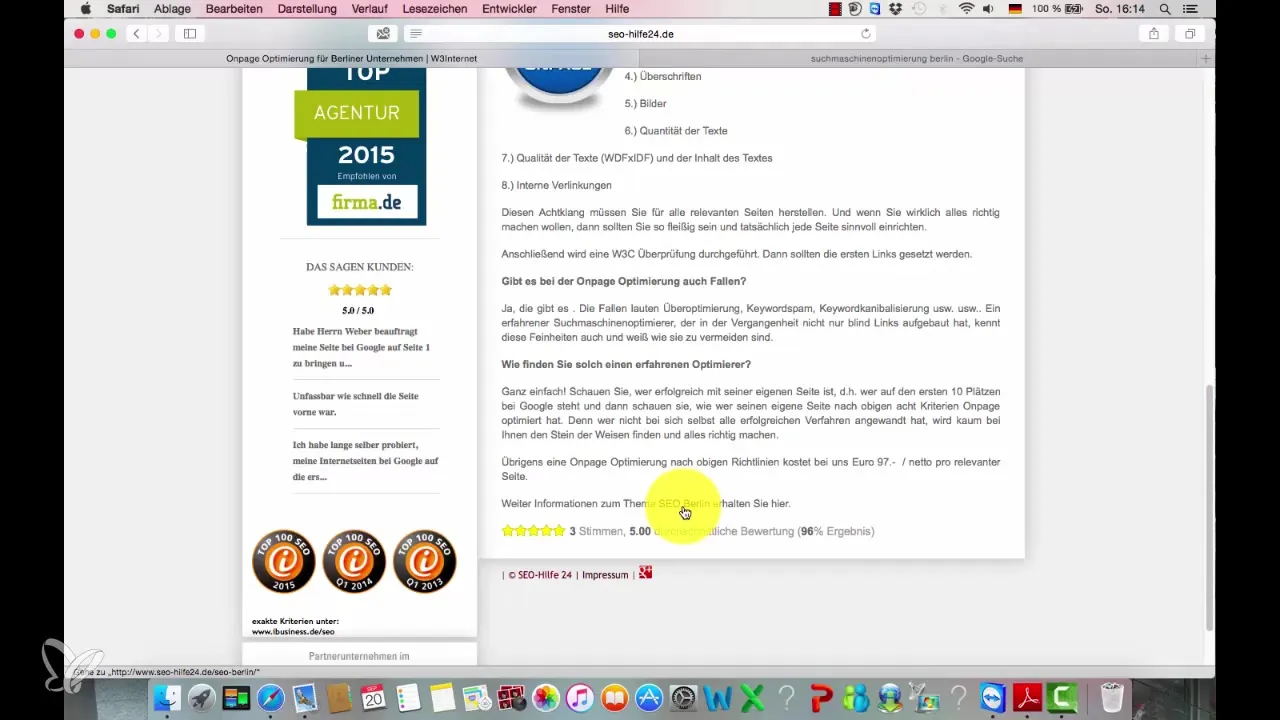
Coherence in Strategy
All points of OnPage optimization must harmonize to present a unified picture. Each aspect should focus on the main theme and be valuable for both users and search engines. When your SEO architecture, URL, meta description, header structure, content, image optimization, and internal linking align, you will see positive results.
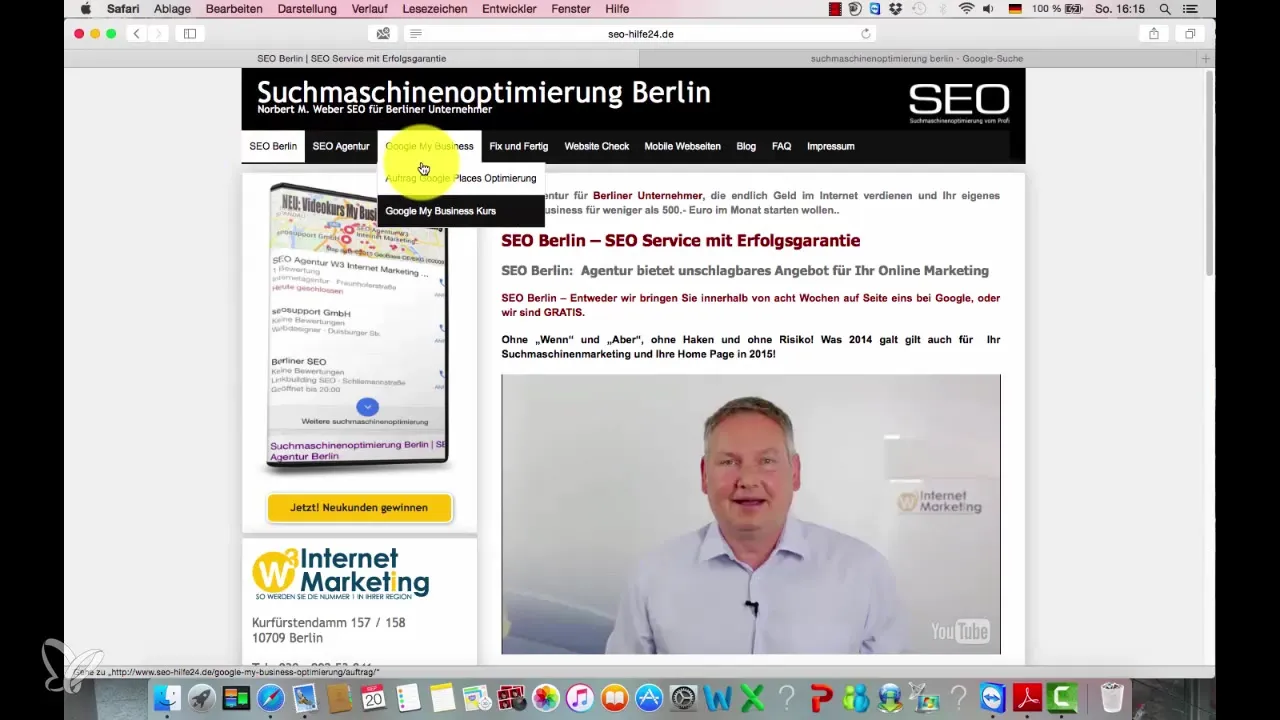
Summary – OnPage Optimization: The Key to Your SEO Success
A well-structured OnPage optimization is crucial to becoming visible in search engines. Consider the eight points that you have just learned as the entrance to an effective SEO strategy. Implementing these guidelines can make the difference between an invisible and a successful website. Start implementing now and watch how your rankings improve!
Frequently Asked Questions
What is OnPage optimization?OnPage optimization includes all measures taken directly on the website to improve visibility in search engines.
How many words should a good text for SEO have?A good text should have at least 2000 words to be classified as valuable and informative.
Why are internal links important?Internal links help improve the user experience and strengthen the relevance of the content in relation to the main theme of the website.
How can I make my images SEO-friendly?Images should be accompanied by meaningful descriptions that include the main keyword.
What should be included in a meta description?A meta description should briefly and concisely outline the topic of the website and include the main keyword.
